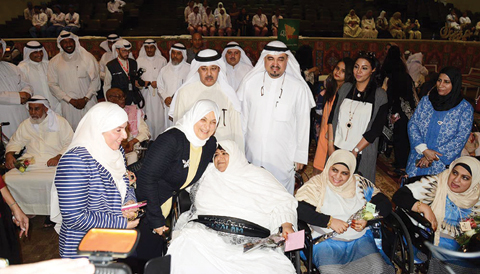HUALIEN: Rescuers freed nine people trapped in a winding cave in Taiwan’s mountainous east on Friday, while locating two others who were feared dead, as they searched for those still missing after the island’s biggest earthquake in 25 years. The official death toll from Wednesday’s magnitude-7.4 quake still stood at 10, but the government in the hardest-hit area of Hualien county said two more people on a hiking trail were found with “no signs of life”.
Crushed by a landslide, the two people were buried deep beneath massive boulders, making it difficult for workers to get to them. “Their bodies have been found, but they have not been excavated yet. We will add them to the death toll after they are excavated and identified,” said Interior Minister Lin Yu-chang. Hundreds more were still stranded around the mountains that flank the county on Friday, with roads blocked off by landslides and rockfalls. However, most were known to be safe as rescuers deployed helicopters, drones and smaller teams with dogs to reach them. Rescuers had found nine people alive in a cave popular with tourists called the Tunnel of Nine Turns on Friday.
Lin said that progress was “ahead of schedule”. “There are still aftershocks and rocks falling but in a very short period of about five hours today, we have managed to repair 10 kilometers of roads,” he said. In the main city of Hualien, authorities allowed residents to enter a building with a crumbling facade in 15-minute intervals so that they could retrieve their belongings.
Some opted to throw mattresses and bags of clothing out the window, while a young mother slowly carried a cot out for her 10-month-old baby. “We are told the building has become dangerous and there probably won’t be another chance to move our things afterwards,” said the 24-year-old woman surnamed Chen. “During the big quake... I was only thinking about protecting my baby at the time,” she said. “I didn’t expect it to be so serious and the structure below has become like that.”
Ten minutes away, workers started demolishing a building named Uranus — tilting at a 45-degree angle after half its first floor pancaked — by first using a pink crane to smash its glass windows. The plan was to slowly take it apart — a process that could take two weeks — but an aftershock around 1 pm alarmed the construction team as the building appeared to lean more perilously forward. As rain drizzled across the city, workers accelerated the process, inserting giant metal bars to stabilize the structure.
Next to the Uranus, a digital sign on another building blared, “Don’t give up! Hualien add oil!” — using a Chinese expression of support. The national disaster agency said 10 people had been killed and 1,123 injured — though the severity of the wounded was not specified. More than 630 were stranded but accounted for, while authorities had lost contact with 13.
Stranded, but safe
Rescuers set off early Friday to airdrop boxes of food and supplies to a group of students, teachers, residents and some tourists stuck at an elementary school that was inaccessible. Some were also airlifted out from a luxury hotel, the Silks Place Taroko, that had converted its parking lot into a makeshift helicopter landing pad. One of the places cut off was a youth hostel, where a staffer told AFP on Thursday that more than 50 people — including a Briton and four German nationals — were stuck waiting for roads to be cleared.
“We are all safe and have enough supplies. The damaged roads are being repaired,” the staffer surnamed Lin said, adding that she was hopeful they could leave by Friday afternoon. But the light rain which started around noon meant more precarious conditions, said Wu Bao-lung, a search and rescue team leader, who was near the park’s entrance. “I’ve asked my colleagues to watch out for their safety... The collapse inside is quite serious, and there are constant aftershocks today, but we will still try our best,” he told reporters.
In Taiwan’s north, life continued as normal, though remnants of the quake damage could still be seen. One sky train rail in New Taipei City appeared to have been dislodged, with engineers and welders working to fix the line, while alleys around Taipei where debris was still falling were cordoned off. Wednesday’s quake was the most serious in Taiwan since a magnitude-7.6 seism hit the island in 1999.
The death toll then was far higher — with 2,400 people killed in the deadliest natural disaster in the island’s history. Stricter regulations — including enhanced seismic requirements in its building codes — and widespread public disaster awareness appeared to have staved off a more serious catastrophe this time around. — AFP











